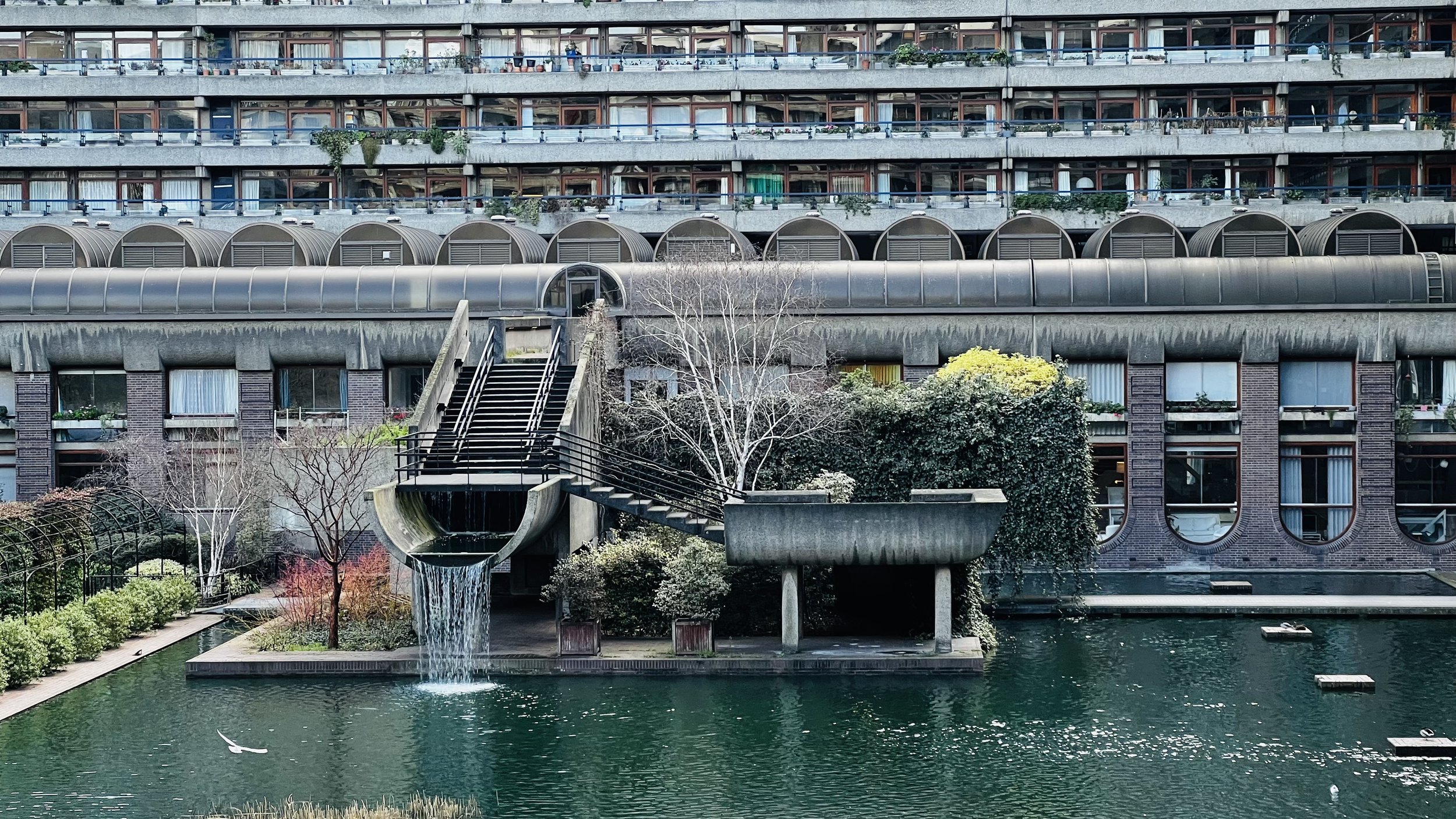The Barbican Estate: A Brutalist Icon of London's Skyline
The Barbican Estate is a landmark residential complex in London, designed in the Brutalist style of architecture by architects Chamberlin, Powell and Bon. It is located in the City of London, near the Barbican Centre and the Museum of London. The estate was built in the 1960s and 70s, with construction beginning in 1963 and being completed in 1976.
The Barbican Estate is considered one of the most iconic examples of Brutalist architecture in London. Its design is characterized by a complex system of concrete towers, walkways, and bridges, arranged around a central lake and garden. The estate comprises 13 terrace blocks and three tower blocks, with a total of 2,014 flats, along with shops, restaurants, and other amenities.
The architects behind the Barbican Estate were influenced by the principles of Le Corbusier's Unité d'Habitation, which aimed to provide high-density housing with all necessary amenities, while also prioritizing the creation of communal spaces and green areas. The estate was designed as a self-contained community, with its own schools, shops, and healthcare facilities.
One of the key features of the Barbican Estate is its elevated walkways and bridges, which connect the various parts of the complex and create a sense of continuity and community. The walkways are designed to provide shelter from the elements and to offer residents stunning views of the surrounding cityscape.
Another notable aspect of the Barbican Estate's design is its use of raw concrete, which is a hallmark of Brutalist architecture. The exposed concrete gives the buildings a rugged, industrial look, while also serving a practical purpose by providing thermal mass and helping to regulate the temperature of the flats.
Despite its initial controversy, the Barbican Estate has become a beloved landmark of London's skyline, and its design has influenced many other Brutalist and postmodern buildings in the city. In 2001, the estate was granted Grade II listed status by English Heritage, recognizing its architectural and cultural significance.




